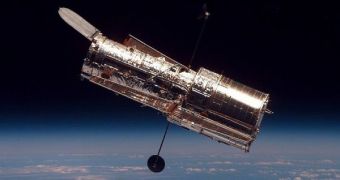Upon closer inspection of pictures found in the archive of the Hubble Space Telescope, astronomers have discovered a new exoplanet, located around the HR 8799 star. The funny thing is that the giant telescope scouted the celestial body in 1998, but came up empty handed as far as planets were concerned. But when researchers at the Herzberg Institute of Astrophysics in Victoria, Canada, led by Christian Marois, looked at the celestial body using the Gemini North telescope in Hawaii years later, they found three planets orbiting the star, each about 10 times more massive than Jupiter.
After viewing the Canadian discovery, the team operating Hubble ravaged through the telescope's massive archive, and isolated the pictures of HR 8799. In all fairness as far as it was concerned, the technology to identify exoplanets in 1998 was not exactly state-of-the-art, so the team had to use an unusual process to get the three planets stick out.
First, researchers digitally-combined images coming from 23 similar stars, which they were sure had no pesky planets around them, and used the obtained photograph to look for inconsistencies in the picture of the troublesome star. When they subtracted the image of HR 8799 from the obtained reference one, the outermost of the three planets popped into view immediately. "I felt the same excitement I experienced when we discovered it the first time," David Lafrenière, an astronomer at the University of Toronto in Ontario, Canada, says.
It goes without saying that the team will now start shuffling through the entire archive, in hopes of finding another such exoplanet, or maybe even more. There's no telling how many celestial bodies may be identified in the thousands of pictures Hubble took during the course of its mission. This is yet another case to prove that modern innovation can be applied to older discoveries, in order to augment and boost them. Bruce Macintosh, a researcher from the Lawrence Livermore National Laboratory in California, states that at least 200 stars have to be revisited for thorough examination, before the team can rest assured they got all exoplanets correct.

 14 DAY TRIAL //
14 DAY TRIAL //